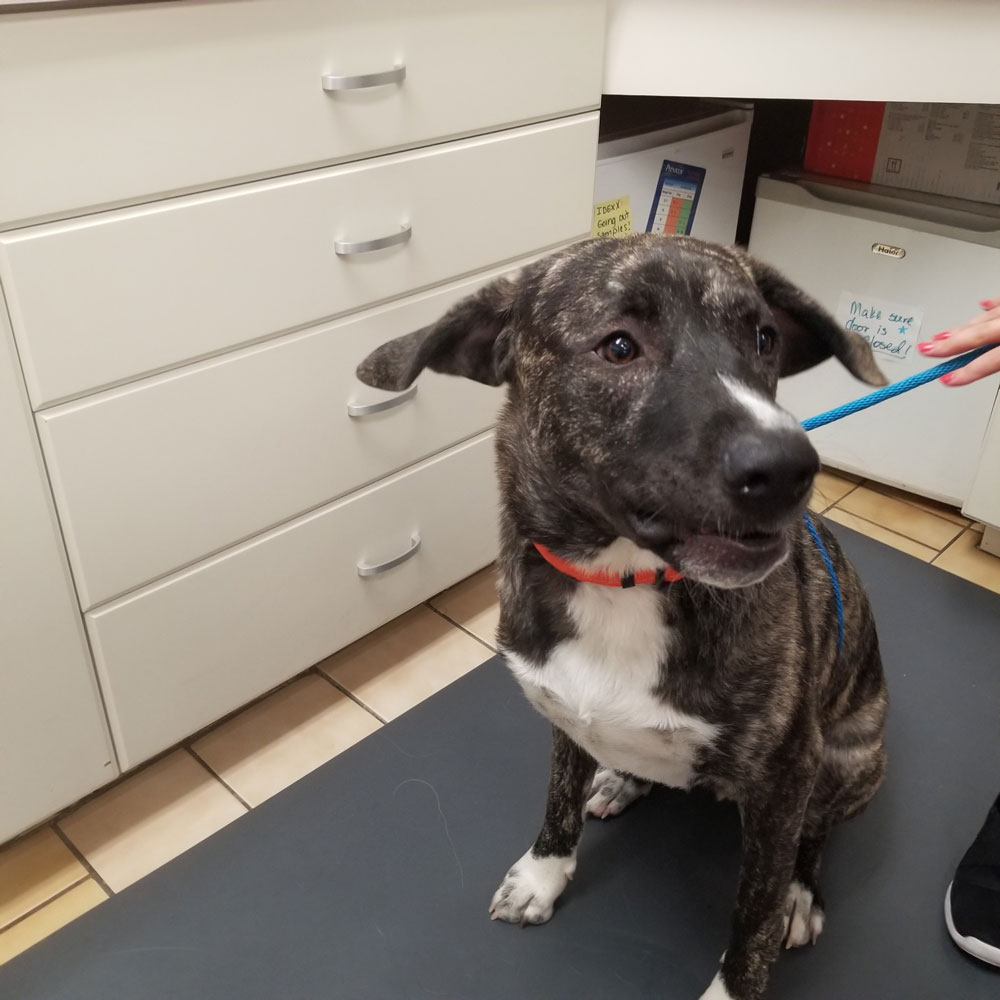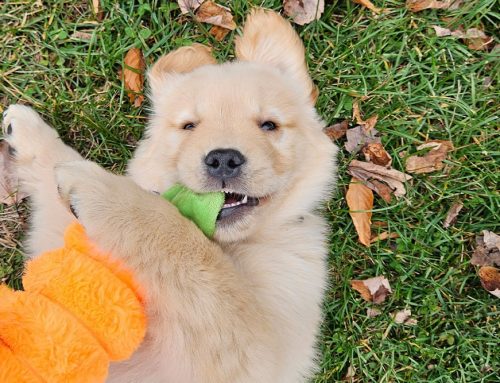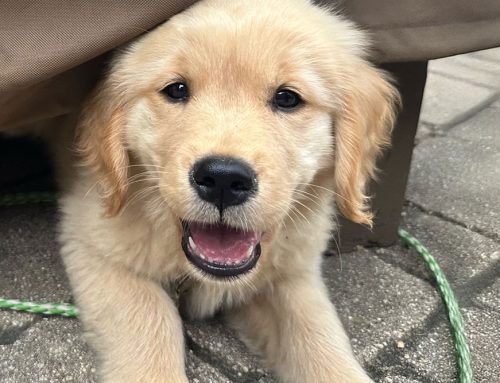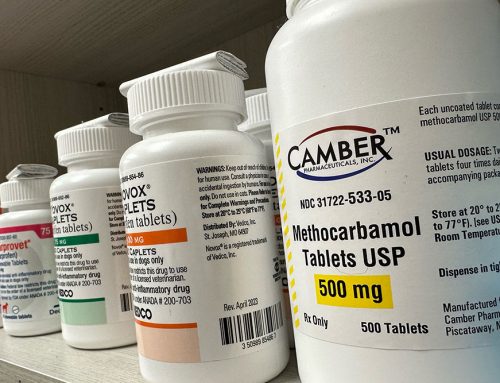Milo, still very much a puppy at a year old, is mildly confused about whether he is an ordinary dog or a social butterfly. Even though he hasn’t found any wings on his back, most days he flits like a butterfly among one dog buddy and another at daycare, wiggling and wagging with boundless enthusiasm. Then, when he gets home, Milo uses his remaining energy to heap all manner of adoration and snuggles upon his people. Unfortunately, his happy-go-lucky nature brought him a spot of trouble with papillomavirus.
Young, highly engaged dogs are the most likely to get the virus, but they are not more susceptible to getting the it just because they are very sociable. “Younger dogs, usually under 2 years, have immune systems that aren’t as highly developed as those in older dogs,” said Dr. Kathy Passinault, Milo’s doctor at Greendale Village Vet. “The highly contagious papillomavirus can be transmitted by other infected dogs, but it can also be found in their normal environments. The virus could lurk on their toys, bowls and bedding.

“When the virus infects a dog, we usually see small warts appear in the dog’s muzzle and lips, but they can grow on any mucosal tissue,” she said. “It isn’t as common, but the warts can grow near the eyes, on eyelids or even between the toes. During Milo’s exam, I found a wart on his eyelid.”
Usually, the warts don’t cause any harm, but they are unsightly, she explained. Most of the time, the warts will not cause particular discomfort for the animal, but in rare cases the warts might cause trouble with chewing or eating. “It’s not a serious condition,” said Passinault, “and the dog cannot pass on the virus to other pet species or to people. They can only share the virus with other dogs.” Despite the warts’ relative harmlessness, however, dogs need to be examined by a veterinarian to ensure the warts are papilloma viral warts and not growths that are symptoms of another condition.
Unless the warts are on the tip of a Halloween witch’s nose, human warts tend to be round, flat and rather smooth. Papillomavirus warts in dogs are more rough in appearance and tend to have a cauliflower-like texture. They also grow as small clusters rather than as single spot, so when a pet owner spots one, it is wise to check thoroughly to see if there are other warts or wart clusters developing elsewhere.
“Generally, the warts will go away in a few months without any type of treatment,” said Passinault. “However, a dog could develop a severe infection, and the wart clusters could grow quite large. If that happens, the dog could have problems eating, and we might need to use a surgical or other remedy. That’s not common, though.” She noted it is also possible for an infection to become irritated enough that bacteria creates a secondary infection. In those cases, antibiotics will clear up the bacterial infection.

“There is also some very exciting research taking place for the papillomavirus,” said Passinault. “There are studies underway for topical and oral medications, and Georgetown University is actually working on a vaccine.”
For more information or to make an appointment, visit greendalevillagevet.com/ or call 414-421-1800.







Leave A Comment